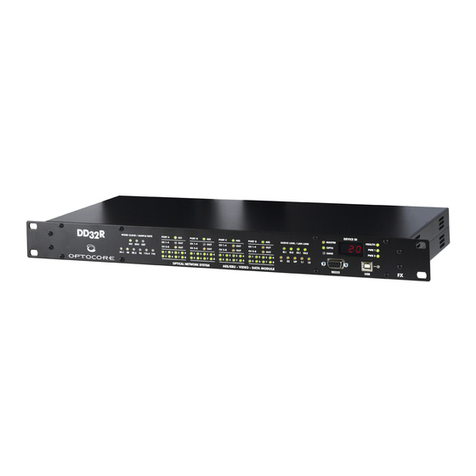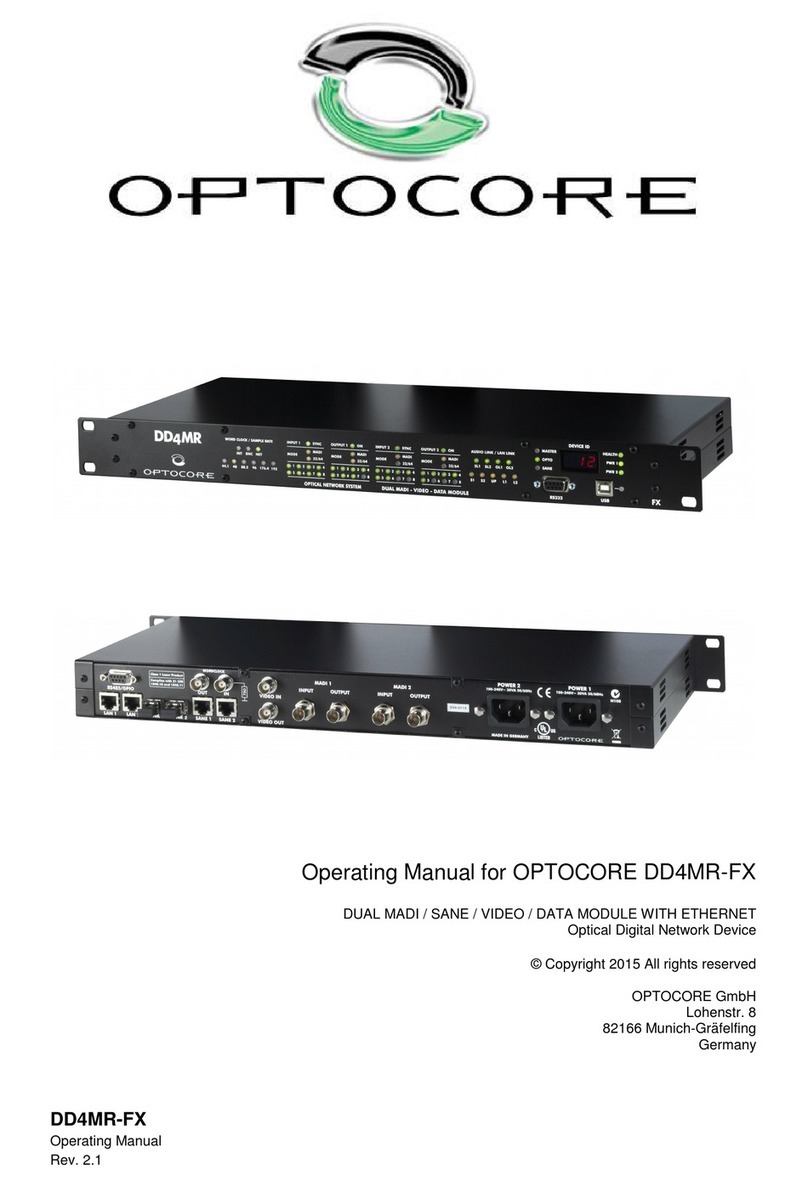OPTOCORE AUTOROUTER
Quick Start Guide 4 / 8 rev. 1.0
Connecting Optocore Autorouter
The Optocore Autorouter automatically creates cross-points between all router ports connected to active devices
to form a closed fiber optic ring network.
While using Optocore Autorouter it is important to properly setup the fiber ring protocol before connecting via
Autorouter. It is recommended to test the standalone system before plugging it to Optocore Autorouter.
Two corresponding LC router ports starting with the odd port number creates the connection SLOT for a single
device fiber optic links (Autorouter port 1 & 2, Autorouter port 3 & 4 ... Autorouter port 39 & 40). It is
recommended to connect always port A of the external device to the odd Autorouter port in the SLOT and port B
to the even Autorouter port of the same SLOT (port naming might differ depending on the protocol, in some
protocols, i.e. Optocore, keeping this order is not required). Always both duplex fiber links from one
device/location must be connected to two neighbour router ports – to the same SLOT. Different connection than
described above may lead to incorrect Autorouter patching which won’t allow closing the loop between all
devices.
The router SLOTs do not need to be used consecutively, pair-wise router ports can be left blank, or the connected
devices can be switched off. Autorouter automatically discovers which slots are occupied and patches them will
all other occupied SLOTs.
Optocore Autorouter advanced port routing algorithm discovers which SLOTs are occupied and routes from the
first active even port to the next active odd port. The last active even port is patched then to the first odd which
closes the loop. Example: if devices are connected to SLOT 1 (ports 1,2), SLOT 4 (ports 7,8) and SLOT 8 (ports
15,16) Optocore Autorouter will patch with the following order: 2 -> 7, 8 -> 15, 16 -> 1. All inactive ports are
skipped. Once another device is added in SLOT 3 (ports 5,6) the Autorouter will reroute to: 2 -> 5, 6 -> 7, 8 -> 15,
16 -> 1. Routing action is very fast however it may affect network stability for a very short time – this depends on
the fiber ring protocol.
Optocore Autorouter – 10 Slots, 20 Duplex fiber ports.
Optocore Autorouter – 20 Slots, 40 Duplex fiber ports.




























